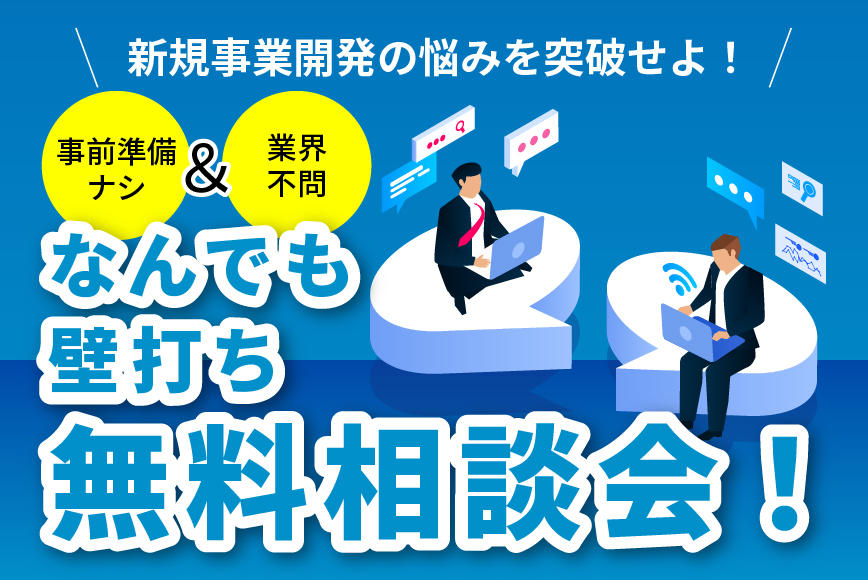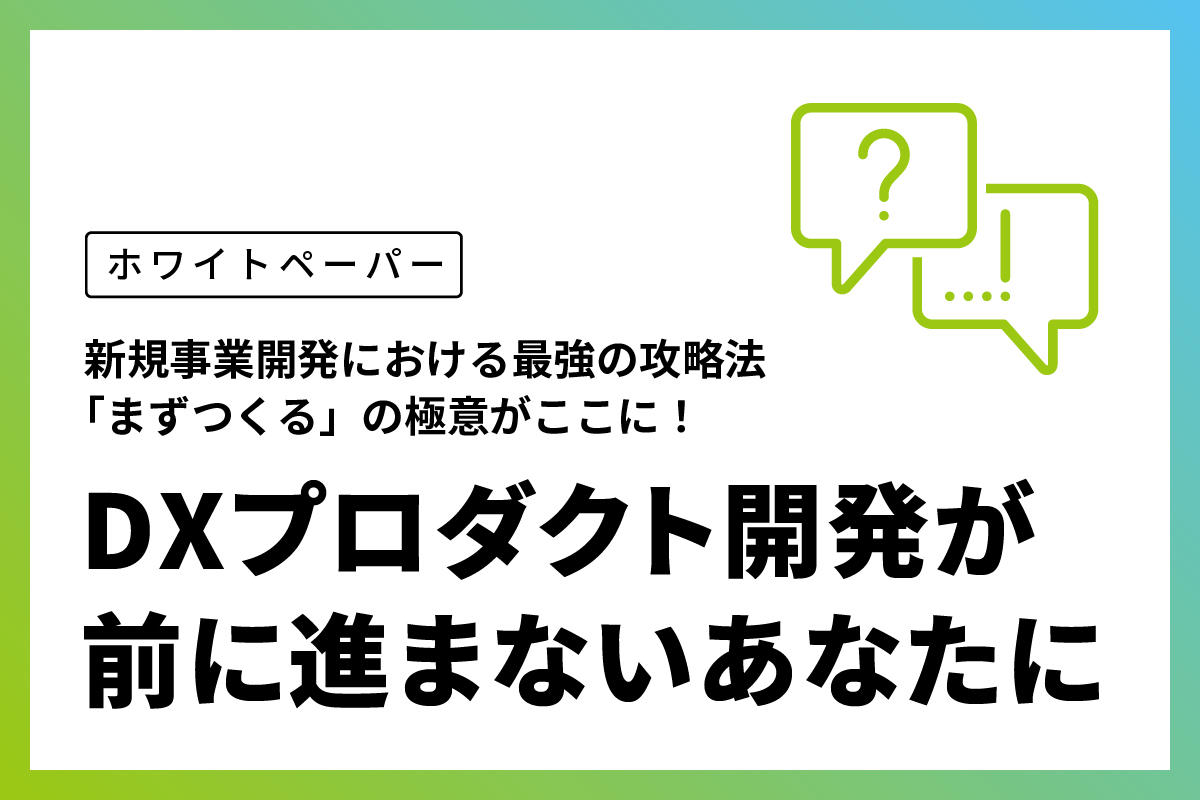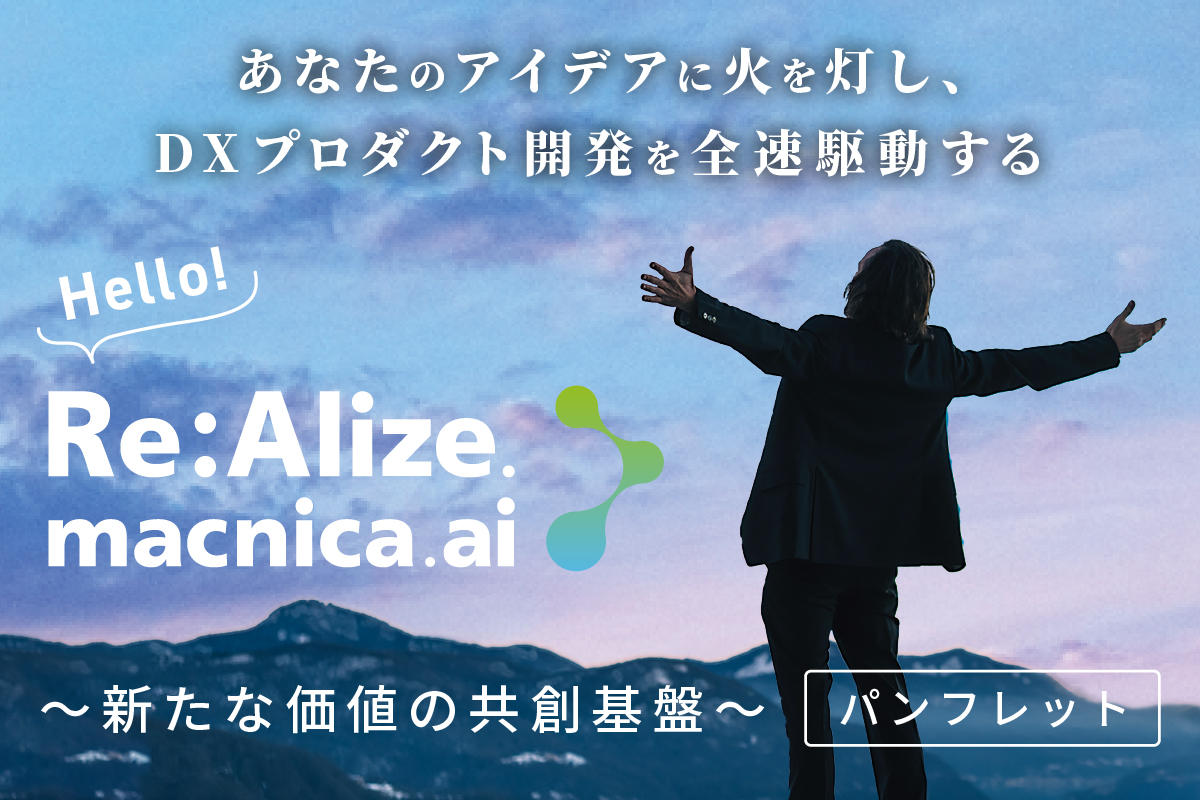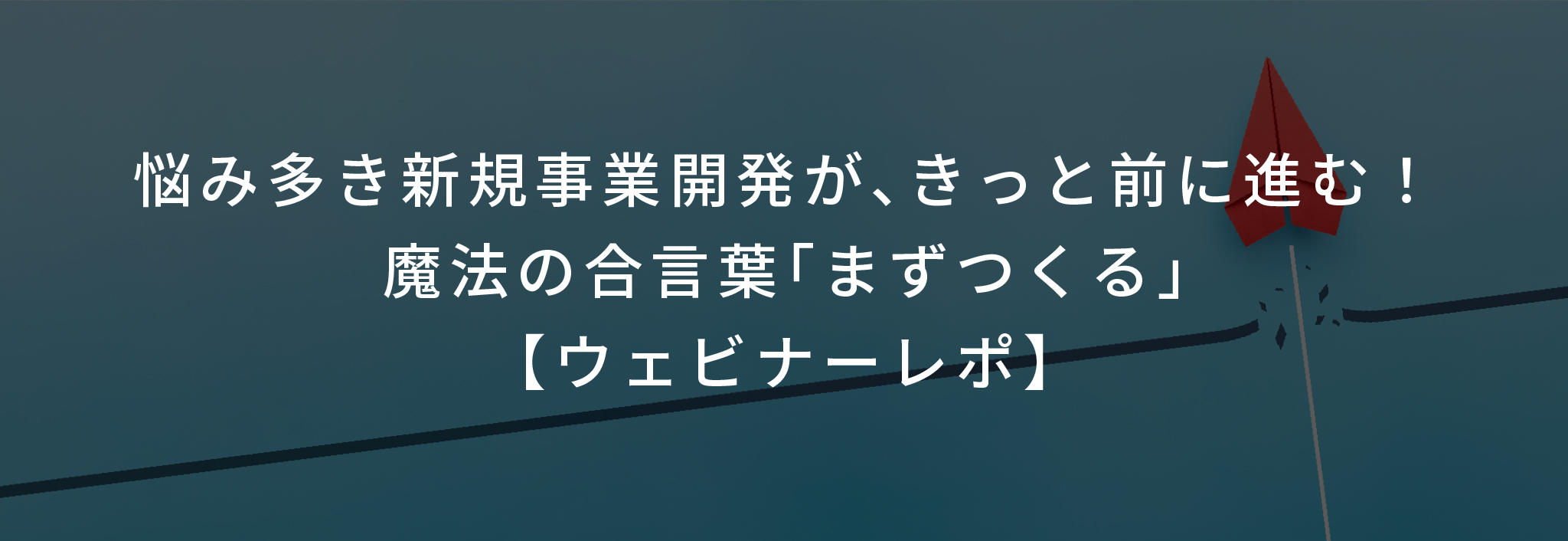
Consumer needs are diversifying due to the remarkable evolution of digital technology. As society and the environment surrounding us continue to change, new business development is required for further corporate growth.
However, at the actual site, there may be many people who say, ``Development is not progressing very well'' or ``Where should I start first?'' In fact, we used to grope in the dark for a long time. However, one day, the situation changed completely after discovering the strongest strategy of “making it first”, and now I am taking on the challenge of developing new businesses one after another.
This time, in order to widely inform everyone about the idea of "creating first," we will be hosting a webinar titled "Full away the troubles of new business development!" held by Macnica 's new business promotion team in July 2023. We have summarized the contents of the lecture on the most powerful strategy, ``The Secret of Creating First''.
This webinar consisted of lectures in Session 1 (first half) and Q&A in Session 2 (second half), so the structure of this article follows that flow. As for the Q&A, I answered the questions that I could not answer on the day of the webinar through this article.
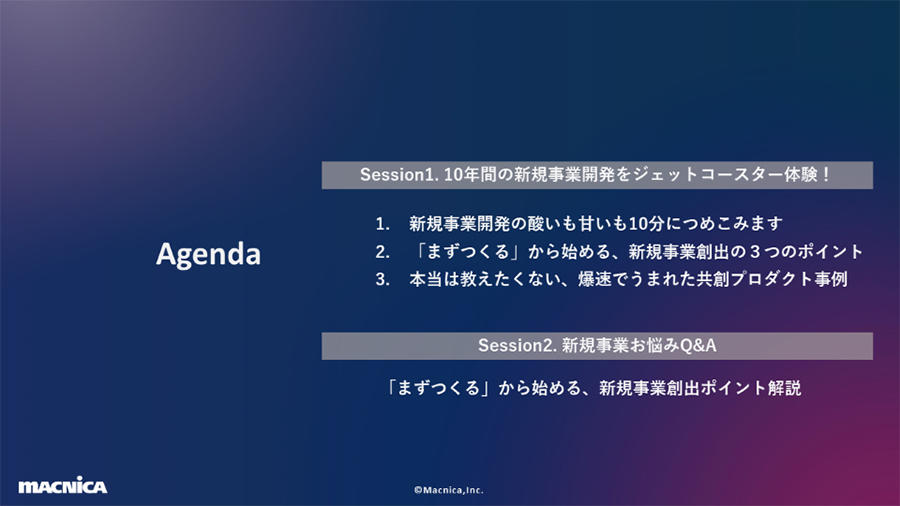
The members who attended the webinar on the day are as shown in the image below. Session 1 focused on Motomura, and Session 2 focused on Mori and Iwata.
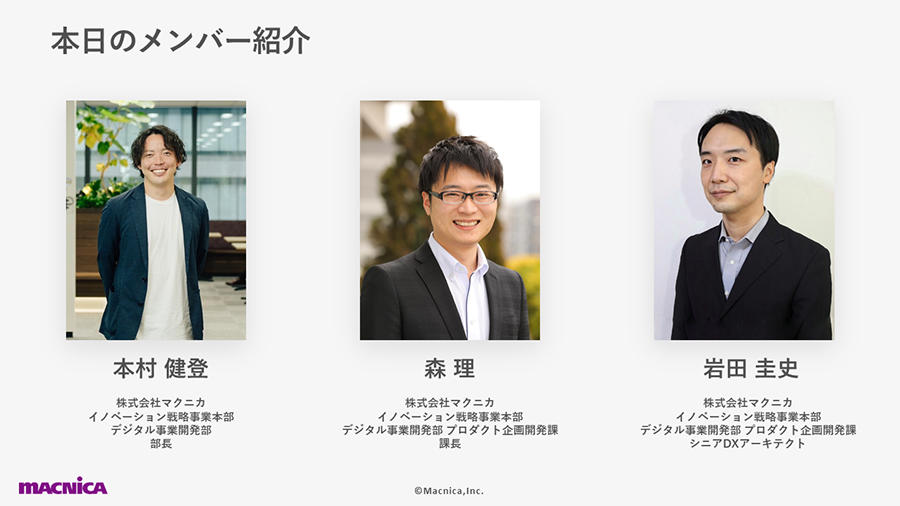
Introduction
First of all, before entering Session 1, there was an introduction of "the background of our lecture on new business development".
Macnica has focused on businesses such as semiconductors and networks, and over the past 10 years has promoted a variety of new businesses such as retail, smart city & mobility, manufacturing DX, and agritech.
The biggest reason for this is to realize our vision of ``aiming to become a service solution company that can transform our business model and create unique value by 2030.'' In other words, while Macnica is a companion partner for our customers in each business, we are also a ``comrade'' who will face the big hurdle of new business development together with you.
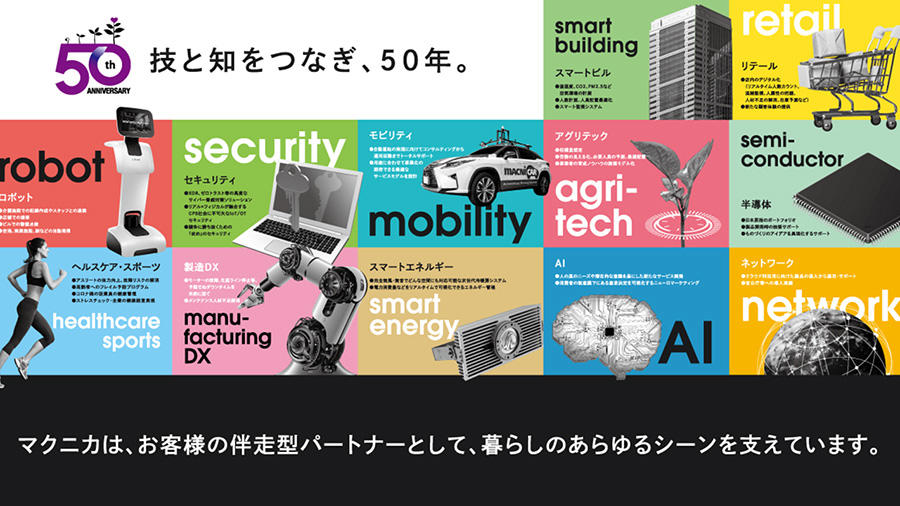
In addition, infectious diseases that have been raging worldwide since around 2020 have become a hot topic. This infectious disease had a great impact on various industries, and some companies improved their performance, while others did not.
In any case, this momentum has given rise to a major trend in which companies need to be flexible in their business operations, acquire new customers, and grow sustainably. That's my impression from Macnica.
Hundreds of people have applied for this webinar, and the occupations and industries are very diverse, and it seems that many people are taking on the challenge of new business development.
I think that people in charge of new business development are often in a lonely environment, but Motomura said, "In this webinar, I will share with you the difficulties of launching a new business and the hints for successful progress. I want to share it,” he concluded the opening.
The sweet and sour of a new business packed into 10 minutes
Session 1, entitled ``A roller coaster experience of 10 years of new business development!'' began with an introduction to the changes in new business development at Macnica. What is noteworthy is that it includes many stories of bitter experiences, as the image says ``Transition of business failure.''
First, let me briefly summarize this transition.
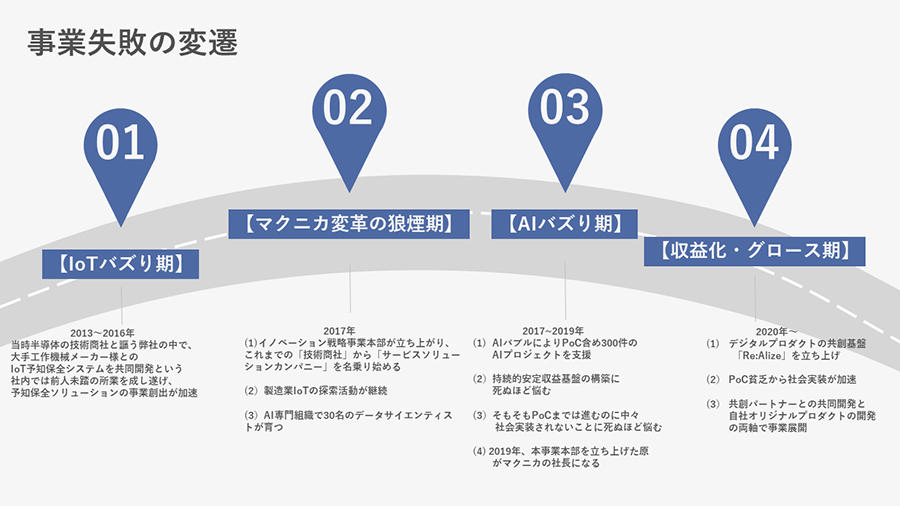
■IoT buzz period (2013-2016)
While there was a growing movement within Macnica to ``start new businesses,'' ``Industry 4.0'' and ``predictive maintenance'' were attracting attention in the manufacturing industry. Macnica immediately took note of this and began contract development of sensing and sensor modules in collaboration with major machine tool manufacturers. Thus, Macnica 's new business development began in the manufacturing industry.
■ The signal fire of Macnica 's transformation (2017)
A new business division was launched with the mission of developing a wide range of new businesses. While continuing to explore the manufacturing IoT, the company has trained approximately 30 data scientists.
■AI buzz period (2017-2019)
PoC that utilizes AI has been attracting a lot of attention, and many companies have invested large sums of money into it. Macnica easily received orders for PoC projects that required millions of dollars with the slogan "How about AI?" and succeeded in providing support for over 300 projects in the AI and digital fields. I thought that business profits were sufficient and we were heading straight into the growth phase, but it became clear that PoC alone was not enough to stabilize profits, and that it was difficult to implement the essential system in society.
■ Profitability/growth period (2020-)
After going through many twists and turns, my understanding of concepts such as "design thinking" and "value perspective" and their importance progressed. As a result of updating capabilities such as organizing a designer team and integrating data scientists and system architects, a new value co-creation platform service "Re: Alize" was born. Finally, they broke away from "PoC poverty" and began to challenge joint development with partners and the development of their own original products.
This is the general flow of the past. Somehow, it seems that it will end with "Happily Ever After", but there was still a continuation to this story.
The next problem was the development of our own original product.
The members, who were unfamiliar with zero-start development based on their own ideas, repeatedly discussed market needs and essential issues, creating an infinitely expanding logic tree with each meeting. Even more troublesome, in this situation, the members thought, "The resolution of the problem is improving!"
As a result, a year passed without the product being completed at all.
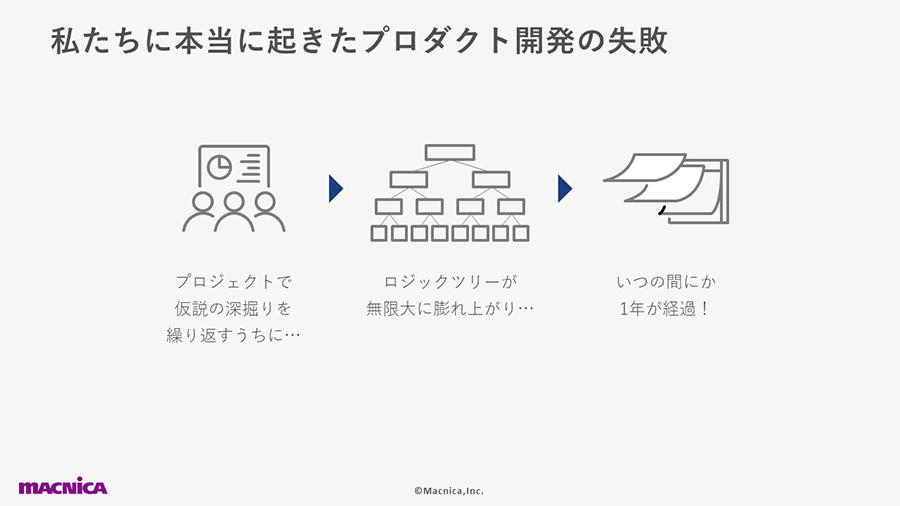
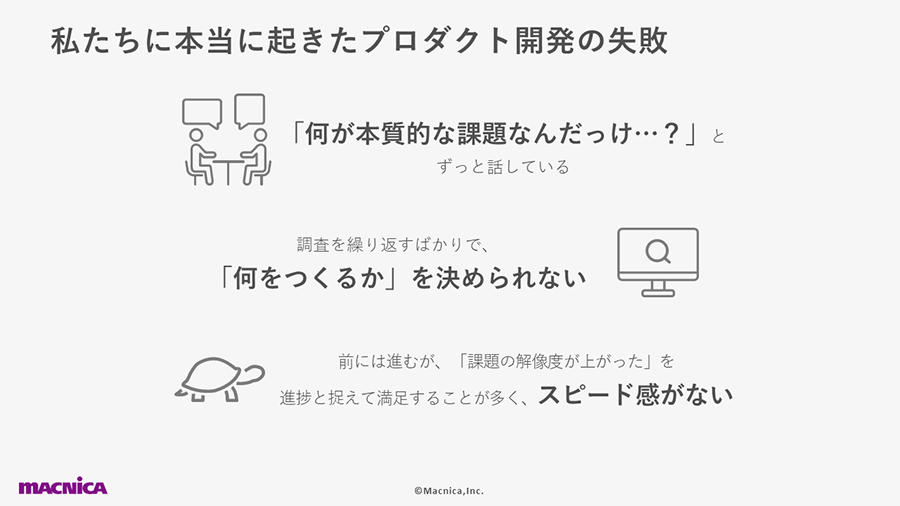
By the way, during that year, I also conducted research using SPEEDA and VisasQ. One of the reasons why the judgment of what to make was dulled was that each person had too much input.
In general, it can be said that the biggest failure factor in this case was the fact that the decision-making process and sense of speed regarding "what to make at what timing" could not be cultivated for a long time.
Motomura thought, "This situation can't go on!" Finally, in order to change this situation and the mindset of the members, he devised "the strongest strategy for new business development." That's what I want to deliver to you most this time, "make it first".
The power of ``creating first'' at Macnica was tremendous. After all, in the past, we couldn't create anything even after a year, but for a certain product, we gave users a prototype that worked in three days, released it a month later, and had over 100 users.
From the next section onwards, we will move on to talk about creating new businesses, including the concept of “making things first.”
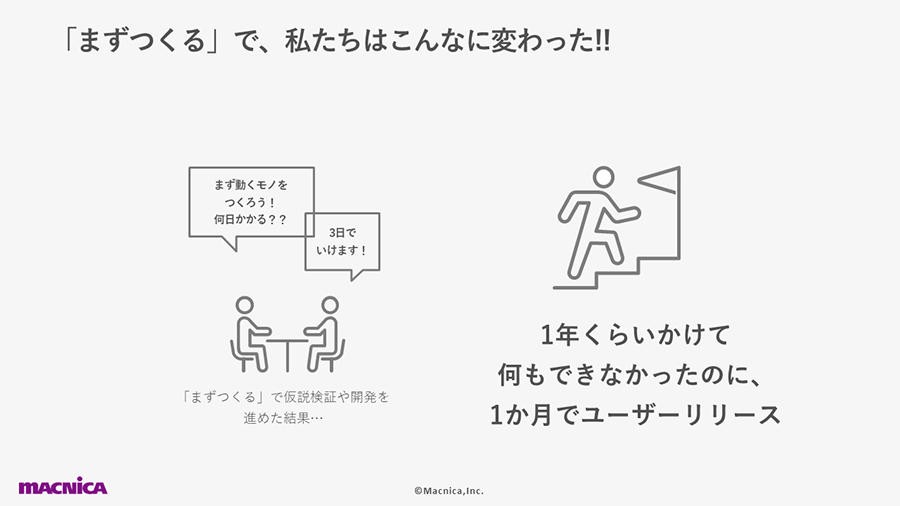
Three points for new business creation, starting with "making first"
From here, we will introduce three points in order for new business creation.
make first
The first is to “make it first.” We think this is the most important thing, and we keep reminding you.
And about the things that should actually be made, I mainly list the three in the image below. Instead of having all three, it would be better to have one or the other depending on the situation. By the way, each element can be rephrased as follows.
■ UI with wireframe
UI that allows screen transitions
■ Minimum operating system
functional prototype
■ LP for attracting customers
WEB page
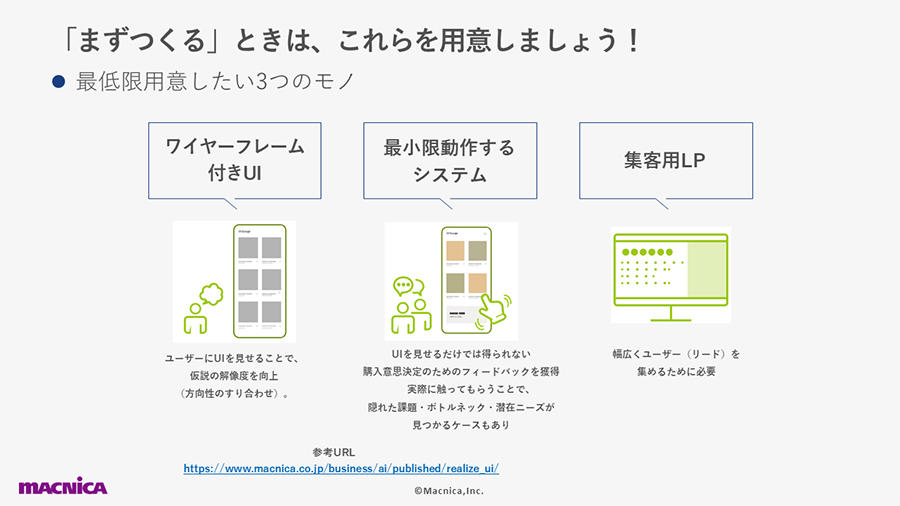
For example, even if you just prepare a UI with a wireframe like the image below, it will be very smooth to match awareness (conversation) with the user. Depending on the situation, it may not be possible to prepare it until after the launch of the project, but Motomura seems to have prepared this in about a week before the launch of the project, leading to smooth consensus building.
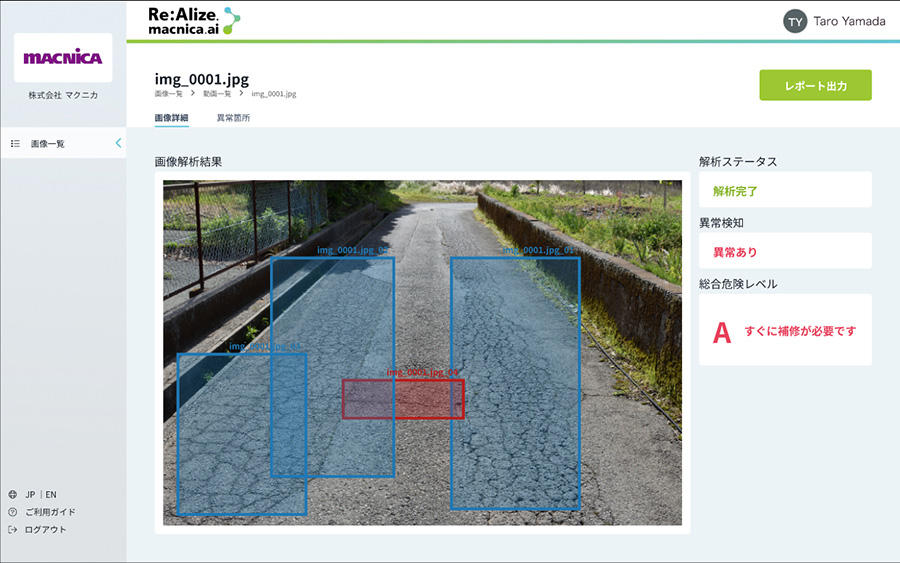
▲ Example 1 of UI with wireframe. AI automatically detects cracks in the road from the camera of the drive recorder.
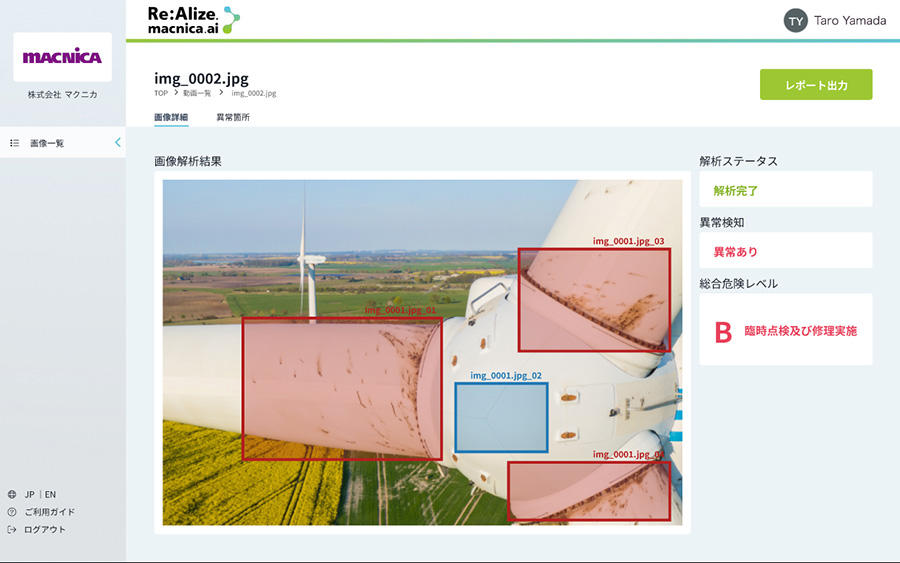
▲ Example 2 of UI with wireframe. The state of deterioration of the plant is photographed by a drone, and AI automatically identifies it.
In addition, in the "minimum operating system", a case was introduced in which an application (prototype) using ChatGPT was proposed to solve the problem of a user who needed several hours a day to create a daily work report. In the case of such things, it is important not to use wireframes, but to actually use it and verify whether it is really effective. Therefore, it is still necessary to “make it first”.
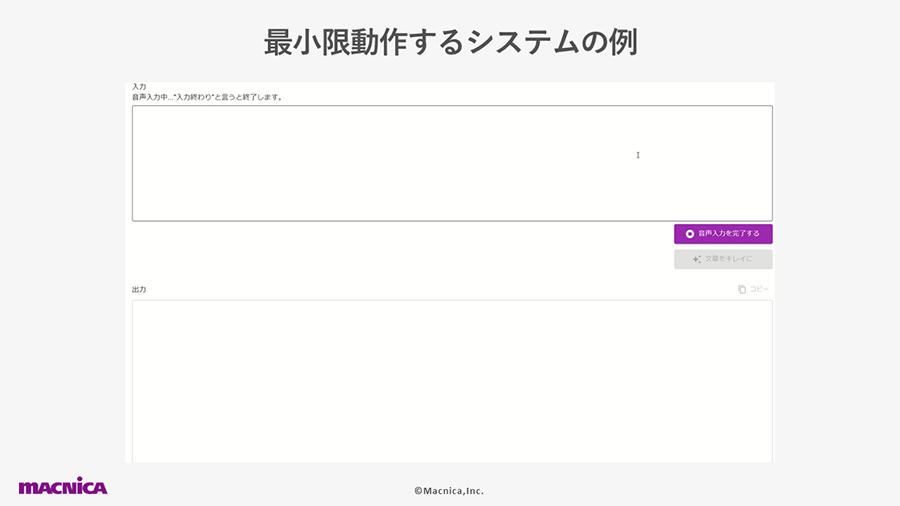
▲Example of a minimally working system. When the daily business report is input by voice, it is automatically converted to text and further summarized.
Why is it important to “make things first”? ①
The next topic was about why “making things first” is important.
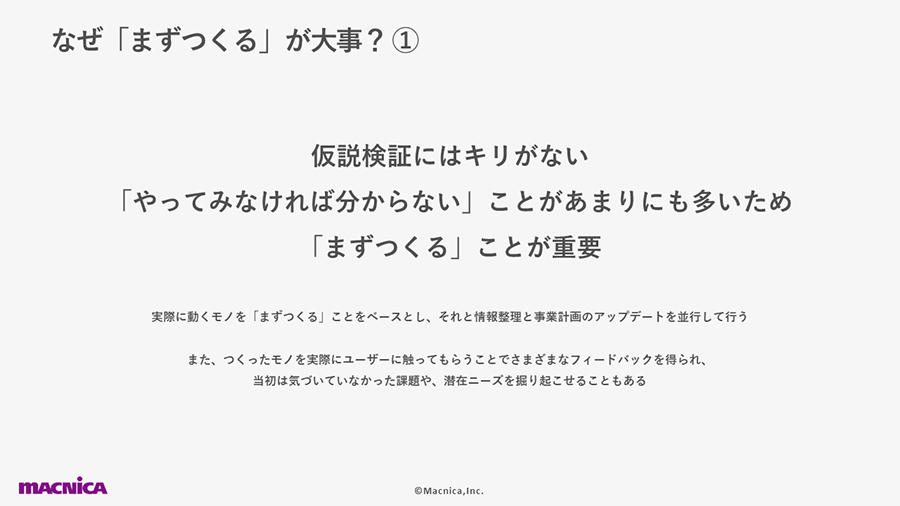
Motomura shared his own experience, saying, "It is certainly important to test hypotheses and learn from them, but you can't move forward just by making hypotheses. You need to create them first."
Furthermore, it is also important to raise the resolution of the expected value by “creating first” and use it to organize information and update business plans.
Why is it important to “make things first”? ②
In addition, communication with related parties (stakeholders), both inside and outside the company, is essential in new business development. In order to clear it, "making first" is effective.
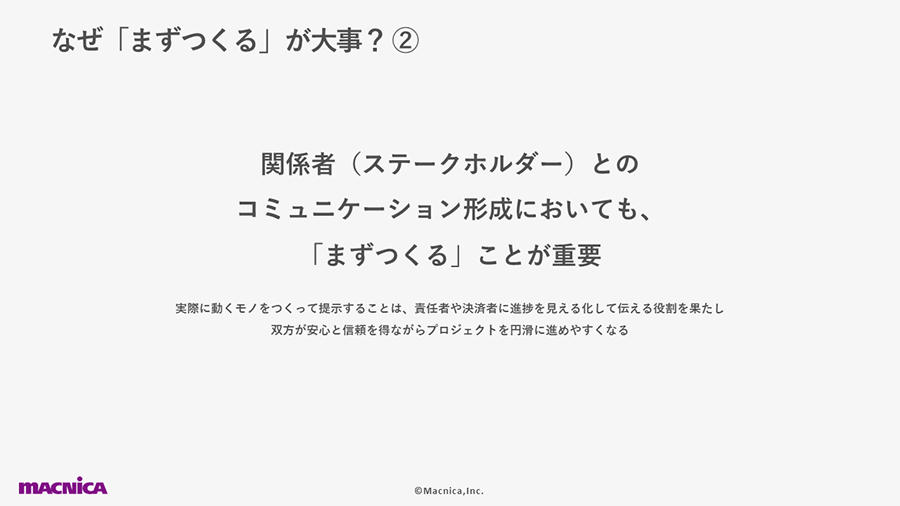
Persons in charge of new business development basically have to explain the domains they want to provide value to and the technologies they want to use, one by one, with limited resources. However, the reality is that the person who has been explained cannot easily imagine the content.
Motomura has also struggled with this point in the past, and there was a time when it was difficult to obtain approval. So, when I showed the prototype I made with the team members to the people involved and said, "I want to aim for this kind of world view," the other person's attitude changed completely. "Oh yeah, that's what I wanted to do from the beginning!"
Business plans and roadmaps usually require rational explanations, but if you feel that there are high barriers to doing so, it is well worth a try.
Why is it important to “make things first”? ③
Another reason given for the importance of “making first” is to “experience success for the time being, no matter how big or small.”
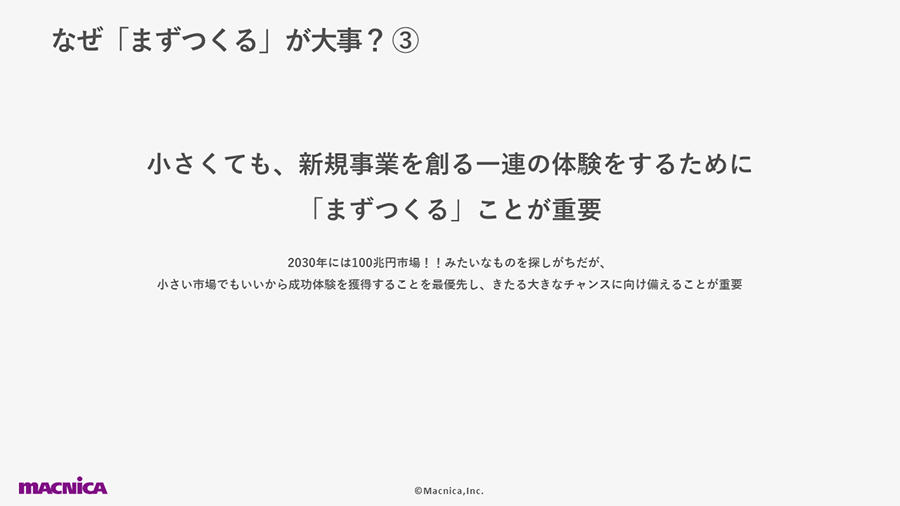
A company's business, whether new or existing, always has goals such as sales, but at this time, it is not very good to consider the expected value of the new business based on the existing business.
For example, let's say that a company has set a policy that says, "We are aiming to enter a market worth 100 trillion yen by 2030, so we want to target large new businesses as well." In that case, even if we were able to explore the market, the system required for business operation would probably be extremely large, and the investment in development would be enormous accordingly. And if this company is inexperienced in new business development, they have to take very risky bets without know-how.
To prevent this from happening, it is important to have users evaluate us even in a small market, build up successful experiences such as providing a good experience to those users, and prepare for the big opportunities to come. And in order to acquire that small success, it is essential to “make it first”.
Macnica
At the end of Point 1, the timing of "making things first" and Macnica 's efforts were introduced. Please note that the new business development template used by Macnica can be downloaded from here, so please take advantage of it (click to start downloading immediately).
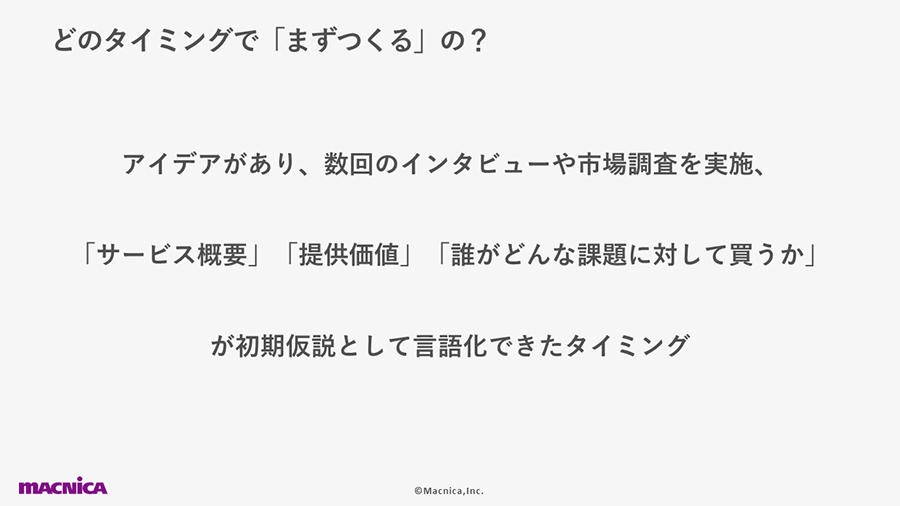

▲Once you have prepared the three items written in the middle row, you want to start working immediately.


▲This is a new business development template used by Motomura's team. Enter the minimum required information here and share your ideas with team members.
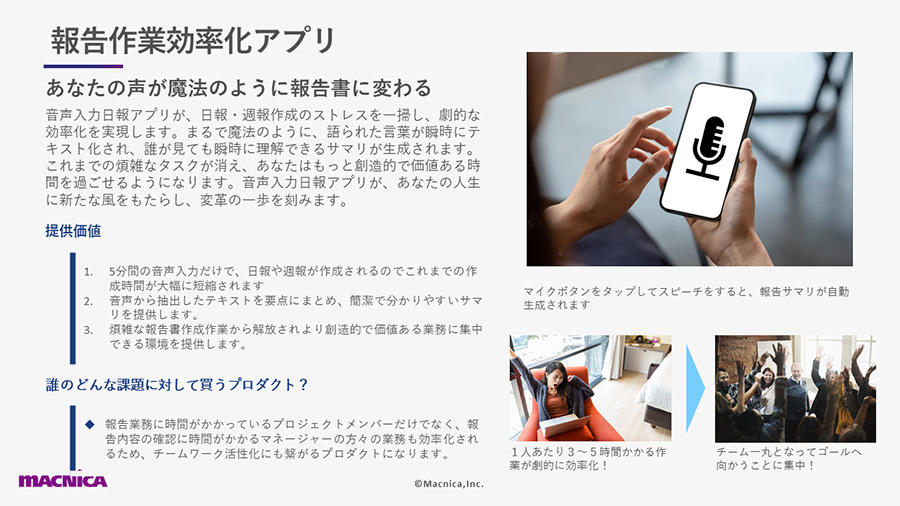

▲ When I actually entered. This is from the business daily report application mentioned earlier. The act of preparing this slide and asking the members for their opinions can be said to be a part of "making first."
core shift
As for the second point in new business creation, "core shift" was introduced. First, the image below classifies new businesses and innovation creation into four quadrants.
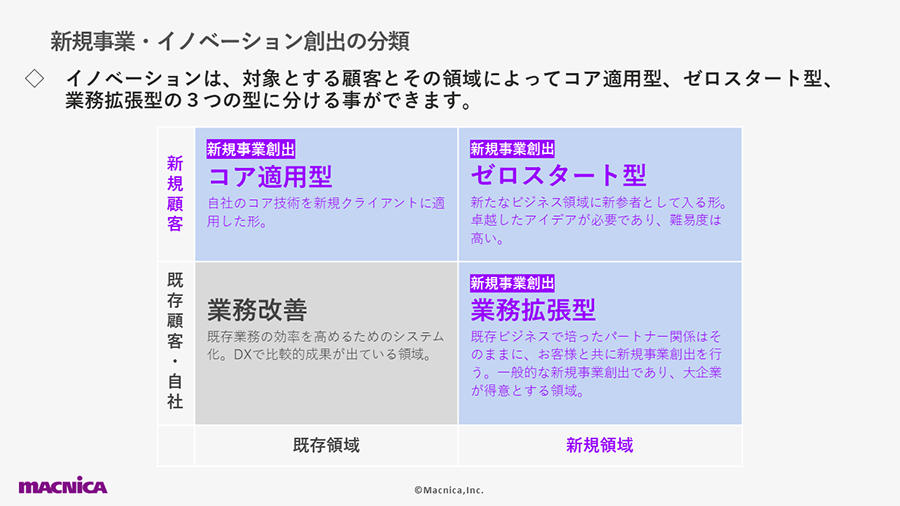
Since we consider the purpose of new business to be "acquisition of new customers," we will aim for the upper left and upper right quadrants of the diagram. However, in the "zero start type" on the upper right, it is necessary to think about the company's core competence literally from scratch, so it can be said that the hurdles for the challenge are high.
Therefore, what we want to consider is the "core application type" in the upper left, which provides new customers with core technologies and core values that we already have or have experience with.
And when aiming for a "core application type", we call the process of applying the achievements, stories, values, etc. obtained by improving our own business into a form that can be applied to other industries as "core shift". We believe that this is the royal road pattern for business promotion.
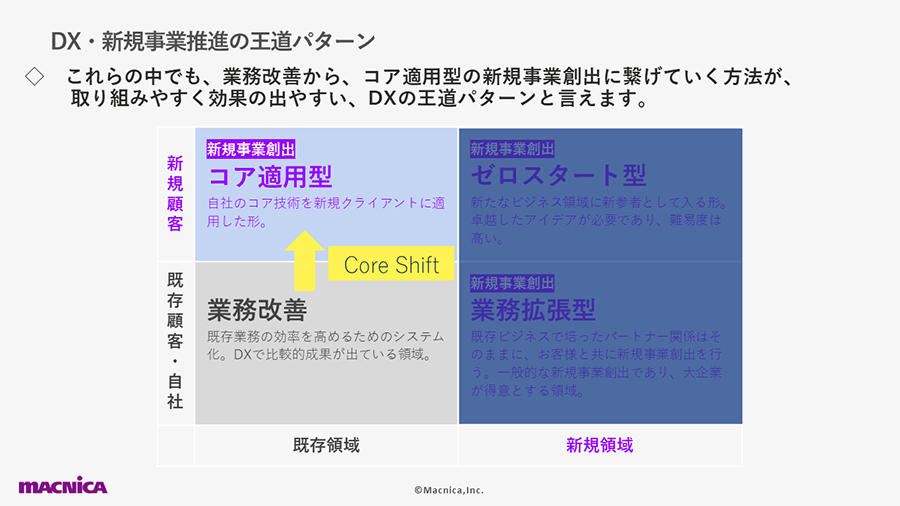
Regarding "Core Shift," two cases of companies with which Macnica has collaborated were selected. Below is a brief summary of their overview.
Sompo Risk Management Company
The company provides consulting services related to various risks to factories and logistics bases. Forklifts are used at logistics bases, and about 2,000 occupational accidents, including fatal accidents, occur annually. Failure to do so may increase the risk of accidents.
Therefore, we introduced a service in which AI analyzes the video of the drive recorder and a consultant calls attention to areas that AI has judged to be dangerous driving. In the past, dangerous driving was confirmed visually, but the time required has been greatly reduced, and the number of overlooked checks has also decreased. As a result, the number of cases for which risk assessment can be performed has increased, leading to an expansion of business opportunities.
For example, by tying up this dangerous driving diagnosis app with a drive recorder manufacturer and selling licenses to various logistics bases, it will be a core shift to deploying the company's capabilities to customers.
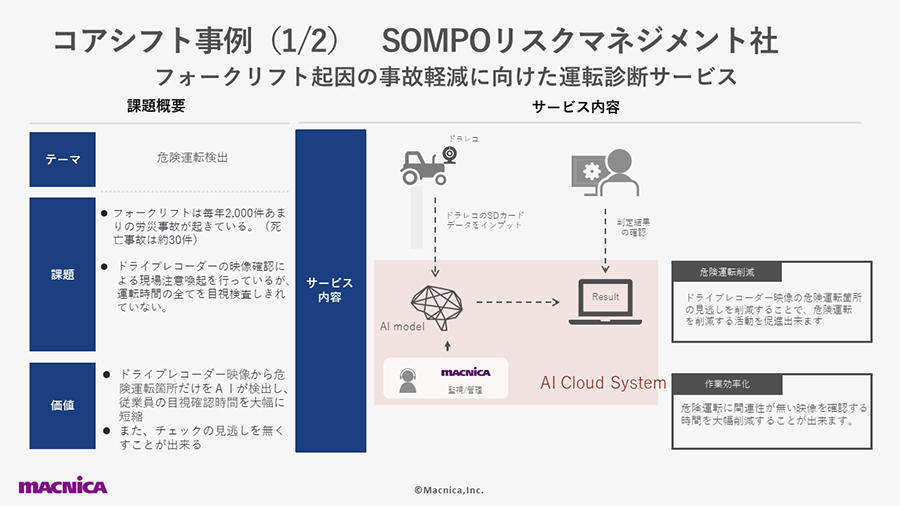
Koiwai
The company is mainly engaged in the casting trial production business.
Customers request estimates and casting plans (plans for making things from blueprints), but only a limited number of employees had the know-how to respond smoothly. On the other hand, more than 1 million pieces of past project information were left behind, so we introduced a system that allows users to search for similar past projects using 3D. As a result, the reduction of in-house work and the elimination of personal dependence were realized, and the number of proposals for receiving orders increased.
In this case, for example, the core shift is to develop (sell, share, etc.) similar systems to other companies in the same industry.
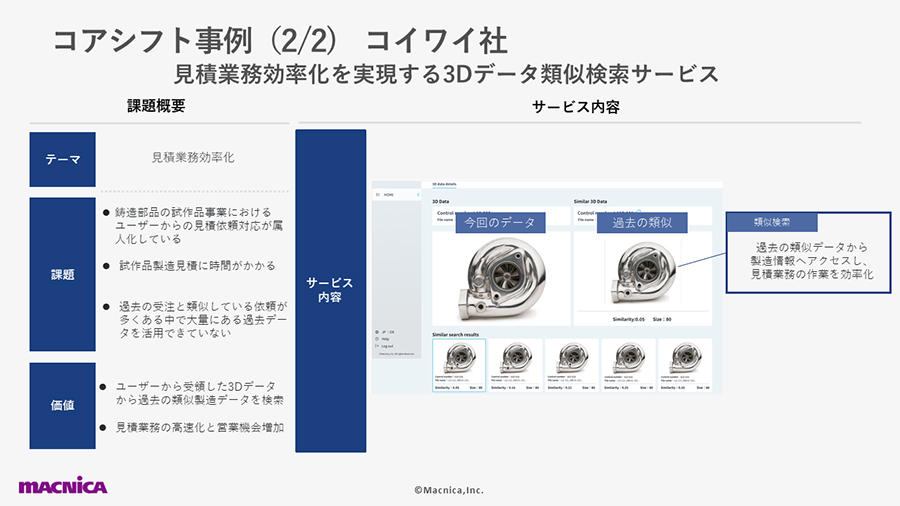
Commitment in Hypothetical Oriented Business Planning Method
The third point is the use of "hypothesis-oriented business planning method".
In new business development, there will always be situations where you have to explain figures such as sales to the people involved. However, in this era of rapid social change and unpredictability, it would be extremely difficult to make a firm promise that “10 years from now, we will definitely achieve XX billion yen.”
We recommend using the University of Pennsylvania's "DDP", or "Discovery Driven Planning".
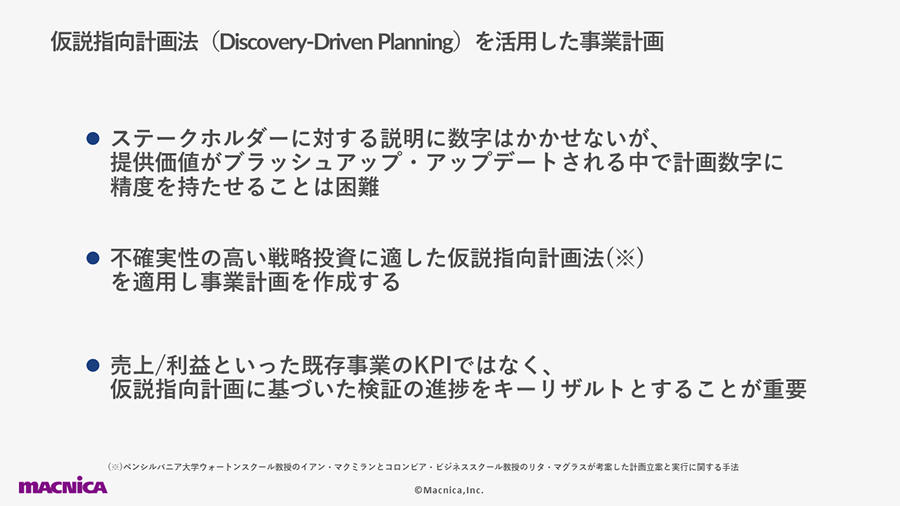
In "hypothesis-oriented programming", you first set the profit you want to reach, and then work backwards from there. The specific method is as follows (Please note that ① to ⑨ are not linked to the "Hypothesis No" at the bottom left of the figure).
① The target profit for the first year is 1 100 million yen (Operating income ratio is 20 %)
② Necessary sales Five billion yen
③ From ②, the allowable cost is Four billion yen
④ Product (service) price is monthly 20 10,000 yen (annual 240 Ten thousand yen)
⑤From ④, users (customers) are generally 200 I want to collect
⑥ The market size is about 1,000 Expect users
⑦From ⑥, as a company 20 % share
⑧ 15 Serving resources required for approx. 1 hundred million 5,000 cost 10,000 yen
⑨ When reaching 200 users, the infrastructure cost of the cloud is about 5,000 cost 10,000 yen
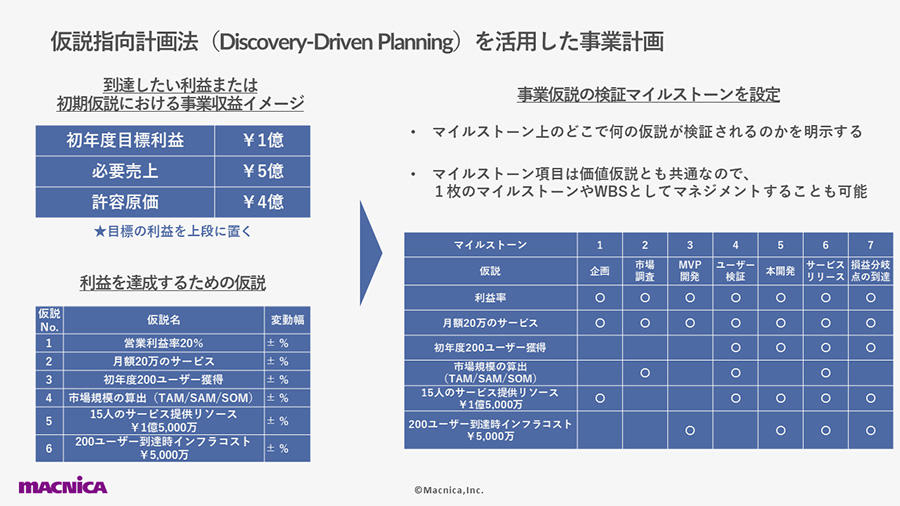
Once you have clarified the target profit and the hypothesis to achieve it, the next step is to clarify where the hypothesis will be tested in the development milestones.
For example, hypotheses such as "profit margin" and "can you really sell at 200,000 yen per month (wouldn't it be better if it were higher?)" have a large impact on the overall profit of the product, so it is necessary to constantly verify in every process. there is.
On the other hand, the hypothesis of "acquisition of 200 users in the first year" is achieved by looking at the reaction of users when guessing the product made to the user, after the start of this development, after the service is released, and when the break-even point is reached. It is a situation such as verifying the propriety at any time.
What is important here is that the person in charge of new business development should commit to the parties involved not in terms of numbers, but in ensuring that the plan progresses smoothly according to schedule. This is because the numbers are only hypothetical and include a lot of possibility that they will change as milestones progress.
Hypothesis-Oriented Planning is a means to have the parties concerned understand this correctly, and to proceed with development while brushing up along the verification milestones.
I really don't want to tell you, an example of a co-creation product that was born at an explosive speed
As I've told you so far, the most important thing is to "make things first" in order to move forward with what you want to do.
In addition, there are many services in the world that would not have been born in the first place if they had not started from “creating”. According to Motomura, our rule of thumb is that intentionally targeting that field accelerates the process of “making things first,” and that this is the reason why we chose the title as “I don’t really want to tell you.”
The following is an example of a co-created product in which Macnica has been involved.
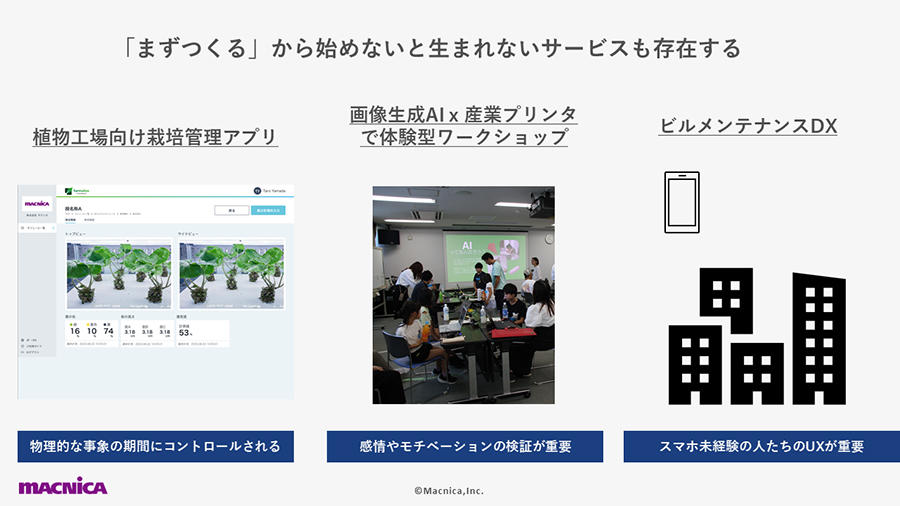
In this way, "making first" is effective when it takes a long time to achieve the original purpose or depending on the situation of the user who uses the app.
Lecture Summary
This is the content of Session 1 "Ten years of new business development as a roller coaster experience!" At the end, Motomura spoke while projecting the image below on the screen.

Source: NVIDIA Omniverse Computing Platform for Building and Operating Metaverse Applications (NVIDIA) P.14 (used July 27, 2023)
“The mountain climbing on the bottom shows the status of sales, which is the backlog of orders for what we are making now, and the sales will be about this in five years. It shows that we are trying to ride a wave that we have never ridden in the process of promoting the future. However, I would like to never give up and work with all of you to promote new business development.”
In this webinar, many people gave us their opinions in the questionnaire, such as "I learned a lot" and "I really understood that you were talking based on your experience." Some of them were frankly written about their troubles in new business development, and we were able to get a clear sense of their daily efforts and hardships.
Macnica will continue to strengthen various initiatives related to new business development so that we can continue to support you as a partner experiencing the same circumstances as you.
New business development Q&A
From here, we summarize the contents of the Q&A conducted in Session 2 (second half) of the webinar (including questions that could not be answered on the day of the webinar).
Q1. We are developing our own service. We are developing with a small number of DX promotion teams, but we are facing challenges in maintaining motivation and securing man-hours because there are many people who are concurrently working. Please let us know if you have any stories of how you survived such cases.
(forest)
Members tend to think that they don't want to work on something that isn't specific, and that it's hard not to be evaluated even if they spend time on it. In other words, it is important to think about what kind of future can be envisioned, and to share concretely the content of hypothetical verification within the company. Talking passionately about what you want to do is important not only to people outside the company, but also to people inside the company.
(Mommura)
It is important how members can perceive the project as their own. Also, new business development has an unexpected impact on personnel evaluations, and I don't think it's good to be evaluated on the same axis as existing businesses.
For example, for quantitative evaluation, it is good to use the number of challenges, or for engineers, the number of MVPs created and addressed to users. On the other hand, if it is a qualitative evaluation, how about documenting the quality of the output (including successes and failures)?
Q2. Although we recognize the importance of "making things first," we have to allocate various resources to "making things first," so internal coordination and explanations are difficult. What points do you think are important in in-house coordination and explanations for promotion?
(Iwata)
I think it would be better to make a small number of friends and start from a small level "making first". If there is a reaction from the customer with that, I think it will be easier to make internal adjustments. It may be difficult depending on the department or company you belong to, but the ideal is to somehow create a connection with the customer.
(forest)
It's about starting small with "making things first." Ultimately, no matter what you do, you need internal coordination, so for example, if you try something by yourself and receive customer feedback as a result, I think it will be easier to proceed with internal coordination. At that time, a single PPT idea sheet is sufficient, and it is enough without going to wireframes.
(Mommura)
Even in the American paper, there is one that says, "The important point when a company innovates is nemawashi. Confirm the existence of persuasion routes." It would be nice to introduce it by saying, "There is an interesting service that has been released recently," and see the reaction.
Q3. What kind of team should I start with? Need an engineer?
(forest)
I think it's a good idea to start with a minimum number of people (even just yourself). At that time, it is faster to think about what we can create with the members who can be assigned.
Q4. Please tell us about the system and personality to put into practice the principle of “making things first.” There are many conservative personnel in our company, so we cannot start development for fear of failure.
(Iwata)
I don't think there is a set form for the system, but I would like to prepare at least one person who has a strong desire to "solve problems" or who can act with a focus on the essence of the problem. Otherwise, we would focus on technology and how, and we would end up spinning around like the problem was wrong in the first place.
I think that conservative human resources will change if they have successful experiences, so it is important to accumulate it first. For example, how about creating a small success story from something close to you that you will become a customer?
(Mommura)
I believe that personality lies in a mindset that allows you to see failure as a learning experience and quickly test hypotheses, as well as an organizational culture and evaluation system that accepts failures and learning.
Q5. How do you secure development resources that can be created immediately? Also, what is the allowable cost for “immediate production”?
(Iwata)
For example, I think the ideal flow is to create the minimum amount of resources that are easy to secure, such as your own man-hours, remove stakeholders from customer candidates, and secure additional budgets. In other words, it's a form similar to funding for a venture company.
I think the cost is case-by-case, but I think it is roughly determined by the cost necessary for hypothesis verification, the company culture x business TAM/SAM/SOM, and the accuracy of the business. Fundamentally, we believe that the initial cost will be less if it can be realized with software.
Q6. Are wireframes mainly for in-house development? Is it the content that was born mainly to share with customers?
(Iwata)
We have both, but sharing with our customers is more effective. In one case, I wrote the screen design directly on the whiteboard at the customer's site, and I wrote it on paper and verified "Is this enough as an experience?"
The customer was at a stage where the product itself did not exist, but they were very cooperative in introducing it. In this way, I think it would be efficient to develop the system in-house based on customer feedback.
Q7. First of all, I am working on making it, but it is difficult to explain to stakeholders who do not have DDP thinking.
(Iwata)
When there was a stakeholder who said, "Bring me a definitive business plan," I used to work from the back door instead of dealing directly with that person. Things will work out better that way.
(Mommura)
For example, if your company was founded 30 years ago and had sales of 50 billion yen, it would have taken 30 years for your new business to reach 50 billion yen in sales.
Even if there are stakeholders who do not have DDP thinking, based on the above facts, I have to say that the instruction and thinking to reach the existing business level in 3 years is logically broken. . It's an extreme argument to say, "If it took 30 years for existing businesses, please give us 30 years, too."
Q8. What are the skills required for “immediate creation”?
(Iwata)
There are various things, but the most important ones are "skills to identify the minimum elements necessary for verifying issues" and "skills to communicate with customers with those minimum elements".
I think that there are times when people hesitate to think that "it can't be realized without technical verification". A good WoZ prototype may be enough. Also, even a little concept material is enough.
I believe that if the experience is worth it, we can prove that the technology is well worth the investment, and we can get the development costs later.
Q9. What kind of evaluation criteria and methods do you use to narrow down the hypotheses that have emerged? This is often the case with hypotheses with louder voices, but there are many dream-like hypotheses that even PoC is impossible, which can be a problem. This time, I thought that "making first (that is, making things)" would be one of the countermeasures.
(Iwata)
There are several approaches, but they are narrowed down by "value when verified", "verification speed (is the hypothesis ready to be verified?)", and "certainty". Also, since the premise of that hypothesis may be another hypothesis, I think it is necessary to decompose it as a tree and think about whether the premise is properly formed.
Q10. What should I do if there is no customer connection?
(forest)
Why don't you cooperate with in-house sales and make connections through a different route than usual? Active activities such as making inquiries from the assumed user's website and going to related industry exhibitions are also effective. First of all, it is important to act first to catch customers.
Q11. In order to acquire new capabilities, I think there are internal training, mid-career recruitment, or outsourcing without internal capabilities.
(Iwata)
I think that it is common to want to utilize the core part in-house and the others outside the company. Even if we outsource at first, we try to transfer technology if the part can be core.
(Mommura)
In-house training = It is not necessary to be a full-time employee, and it is important to train staff regardless of whether they are dispatched or outsourced in order to achieve their goals. Mid-career recruitment is difficult.
Q12. How do you think about security when using new technology?
(Iwata)
We believe that it is desirable to start with content that has low security requirements and turn it small at the stage where it is not technically possible. On the other hand, even if security requirements are high, if there is value in meeting them, we will devise measures such as limiting the input data, even if it means sacrificing accuracy and functionality to some extent.
Q13. I agree 100 % that making it first is a good method, but I hesitate to expose it to the outside in relation to securing intellectual property. How is prototype management managed?
(Iwata)
We would like to keep the internal configuration and technology as secret as possible. It's enough if you can apply the experience you're providing to the user and test your hypothesis. However, if it is necessary for verification, exposure is unavoidable. Also, even if I don't intend to expose it, if it leaks even inside the company, I can't control it, so I'm still worried about that.
Q14. What are your thoughts on securing rights through patents, etc., as the hurdles to turning them into products and services are too high?
(Iwata)
In order to suppress the core part so that it is not evaded, I think it is necessary to think about what products and services should be from the perspective of the evasion side. It is true that the hurdles may be low because verification is not required, but on the other hand, I have the impression that it is very difficult to bring profit to a company with intellectual property. Personally, I can gain new knowledge by applying what I have created to users, so that is more fun.
Q15. In HW (hardware), what are the advantages and disadvantages of making things and presenting them to users and digital engineering that has started with automobiles and aircraft?
(Iwata)
I think it's about "what to verify" and "is it a suitable input?" Specifically, there are elements such as "Will you conduct technical design prototyping and verification?" and "Will you verify customer experience?" I think that digital engineering is excellent for speedy technical verification, but it is insufficient for verification of customer experience.
There is also the problem that by appearing to have a high degree of completion, attention is drawn to the details rather than the issues that you want to verify. Of course, even if it is digital, if there is a mechanism to reduce points and verify it, it may still be usable.
Q16. What should I do if the problem is unexpected when the minimum demo screen (image) necessary for hypothesis verification is actually materialized? For example, Boeing 's T-7A seems to have been designing and prototyping with digital engineering, but when the requirements for the ejection seat were expanded later (even small women were adopted as pilots), the development schedule was delayed more than expected. About....
(Iwata)
We would appreciate it if you could keep in mind that the object of "first make" is for testing hypotheses, and it does not mean that what you make will be commercialized as it is. Also, this time we will be premised on new business development, so I think it will be different for businesses that have a solid development roadmap.
However, in the case of your question, it is likely that the hypothesis that should be verified was not fully verified.
[Hypothesis 1] Pilots will continue to be large men only
[Hypothesis 2] For large men T-7A should be
In such a situation, if [Hypothesis 1] is materialized without being verified, it is appropriate to explore the requirements before making a large investment to materialize it, or to verify it with a small prototype. I think.
